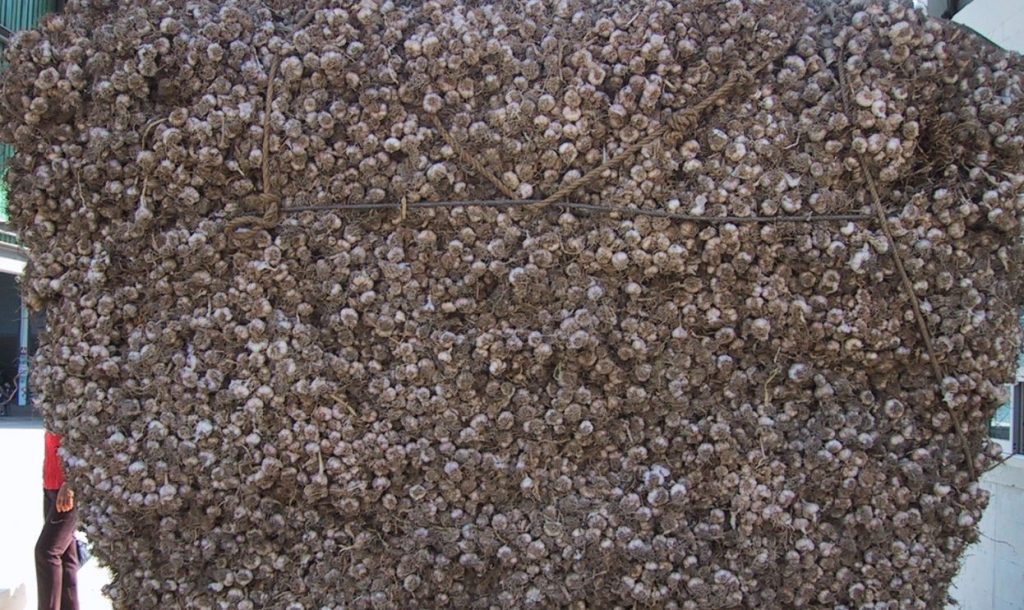The northern Thai village of Ban Tiam encapsulates some of the important achievements and limitations of Thailand’s middle-income rural economy. In this extract from in Thailand’s Political Peasants, I provide a summary overview of this local economy:
In describing the contemporary challenges faced by Ban Tiam’s economy, I find it useful to consider political scientist Richard Doner’s analysis of Thailand’s uneven development. Doner makes an important distinction between economic “diversification” and “upgrading.” Thailand has been successful in diversifying its economic activity, moving from an economy largely dependent on agriculture to one dominated by manufacturing and services. Even within the agricultural sector, there has been impressive diversification with a much broader mix of cultivation and export than there was in the rice-dominated 1960s. However, the national record in terms of upgrading–”moving into higher value-added products, at higher levels of efficiency, with local inputs”–has been much poorer. By and large, Thailand’s economic growth has relied on higher levels of inputs (more agricultural land, foreign investment, and domestic labor) rather than on their more efficient use. Even the dramatic growth in manufacturing has been heavily reliant on relatively low technology and labor-intensive goods, with domestic firms tending to focus on assembly rather than design, production, and innovation. Doner argues that without substantial productivity increases via upgrading, Thailand runs the risk of becoming stuck in its middle-income position, especially as competition from lower-wage economies undermines the advantage of Thailand’s labor-intensive exports.
How does Ban Tiam perform in terms of diversification and upgrading? Ban Tiam clearly has a diverse economy, both within and outside the agricultural sector. This diversification is evident in the development of an active, and innovative, cash-crop sector and in the large proportion of income earned from off-farm employment and enterprise. This diversification has been facilitated by the Thai state’s long-term policy shift from taxing the rural economy to subsidizing it. In Ban Tiam, the state has supported the adoption of high-yield rice, invested in irrigation infrastructure, dramatically expanded rural credit provision, and funded an array of local development projects. Road construction has opened up access to regional, national, and international markets. This public investment has increased the productivity of agricultural labor in Ban Tiam, as it has done throughout Thailand. A dense local network of government offices and ongoing state investment in infrastructure also provide a wide range of off-farm employment. The private sector’s role in diversification has been very modest by comparison, although recent investment in contract farming is providing a greater range of crop choice. There is no doubt that, as in rural areas throughout the world, Ban Tiam’s economic diversification, especially the increase in nonfarm income, has played a crucially important role in reducing poverty and lifting the village into a middle-income position.
However, Ban Tiam’s performance in relation to upgrading has been much less impressive. Diversification has certainly increased the range of economic activity, and the nonagricultural sector has grown in both absolute and relative terms, but many of the basic structures of economic activity remain unchanged. Overall, the local economy is still strongly oriented to lower-value forms of production. The state has become a very important source of income, but state expenditure has done little to produce more productive forms of economic activity. State intervention has preserved rather than transformed this rural economy. Rural diversification from subsistence farming to cash cropping and from on-farm to off-farm plays an important role in poverty alleviation, but international experience strongly suggests that sustained and broad-based livelihood improvements require the development of the more lucrative manufacturing and service sectors of local economies. Without this, national disparities between rural and urban areas persist, or even widen, and local versions of these disparities are produced as social groups achieve differential access to the limited sectors of the economy where higher levels of income are possible. This uneven development is evident within Ban Tiam itself.
 Facebook
Facebook  Twitter
Twitter  Soundcloud
Soundcloud  Youtube
Youtube  Rss
Rss 
